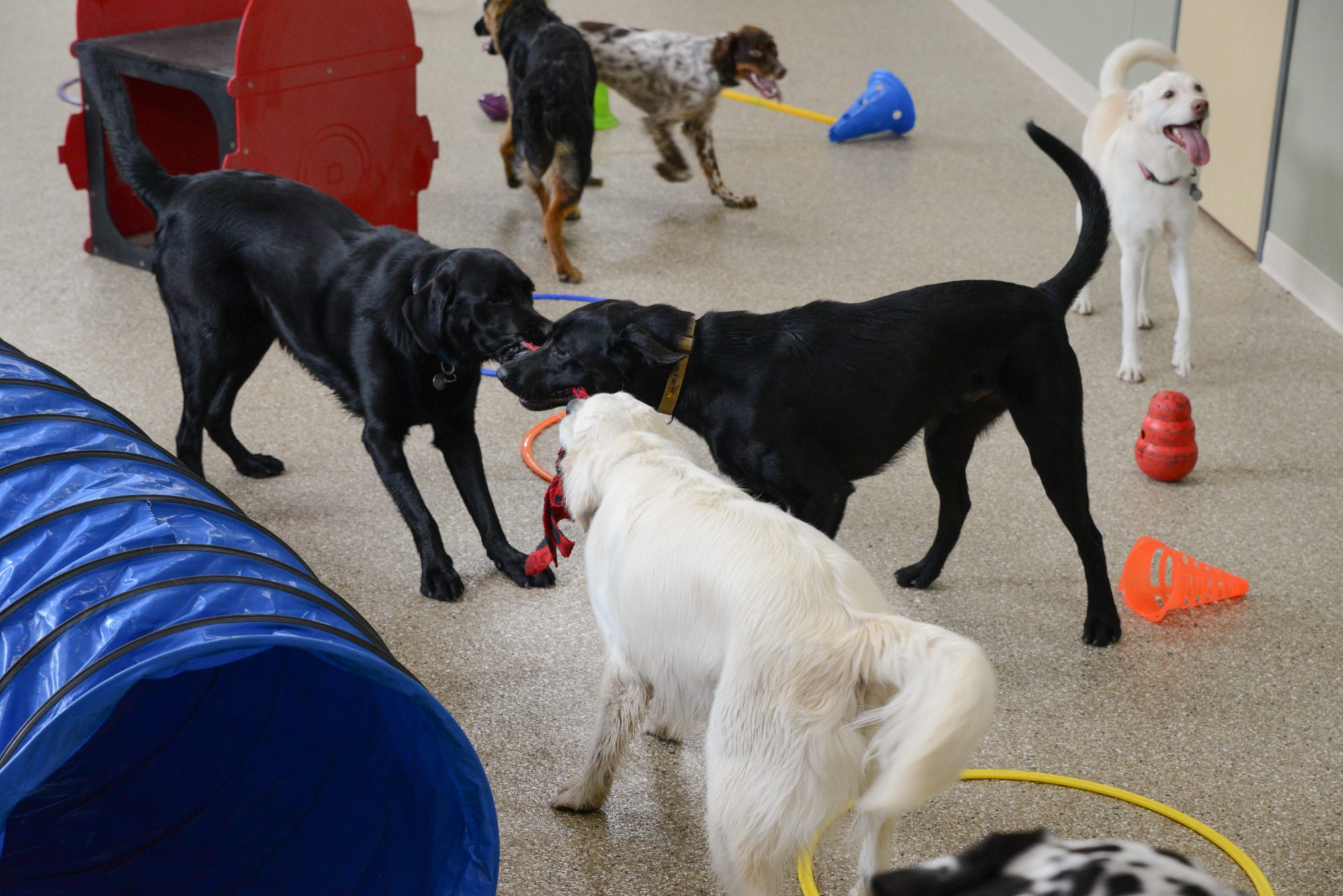Canine Emotional States and Support
By Kari Meyer, Daycare & Hotel Manager– ZimmVet-763-856-4848

At ZimmVet, we understand that a pet’s health extends beyond physical exams and vaccinations to include the mental and emotional well-being of your furry family member. This is why we are dedicated to creating a low stress environment for all of our canine guests visiting the Veterinary Clinic, Pet Hotel, Dog Daycare, Grooming Salon, or Training School.
Wouldn’t life be great if dogs could tell us what they are thinking and feeling? They can! Dogs communicate via stress signals and body language, which takes both experience and training to be able to read. Luckily, our staff at ZimmVet undergo extensive training to do just that!
GREEN MEANS “GO!”
When we describe a dog as being in a “green” emotional state, it indicates that their body language is relaxed and calm. Their ears are neutrally positioned, muzzle and forehead are relaxed, and mouth is usually hanging open in a smile. Dogs will typically not make eye contact with unfamiliar people and animals when they are completely relaxed, blinking frequently with soft are bright eyes. When a dog is relaxed, body weight is distributed evenly on all four paws, movement is curvy and bouncy with a loose topline and the tail is set neutrally. This body language says, “I’m happy and ready to learn/play!”
YELLOW MEANS “ITS HARSHING MY MELLOW!”
A yellow dog could be experiencing fear or, on the flip side of the same yellow coin, be experiencing anxiety or overexcitement. Either way the dog is communicating that, although they are tolerating what’s happening around them, they are by no means comfortable or relaxed. Usually, with some support from a staff member, this nervous energy can be redirected through obedience review, enrichment activities, positive reinforcement, or a short break.
RED MEANS “STOP! THIS IS TOO MUCH!”
A dog in a red emotional state is experiencing high levels of stress, fear, or anxiety. Once this threshold is met, the dog is no longer able to process what is happening around him and may act out as a result of overstimulation. The best course of action is to immediately stop and remove the dog from the situation before he hurts himself or those around him. The dog’s adrenaline level may take 24-48 hours to return to normal after meeting the red threshold.
Through counter-conditioning, positive reinforcement, and stress management options we work with guests and owners to build trust and confidence during visits. Every dog experiences each of these emotional states at some point. Our goal at ZimmVet is to help all of our guests maintain a green emotional status during their visits. A personalized behavior management plan that speaks to each guest’s physical, mental, and emotional well-being is the first step in supporting a happy and healthy pet!
Disclaimer: This written content is meant to be educational and is not medical advice. Always consult a veterinarian about medical advice for your pet.


